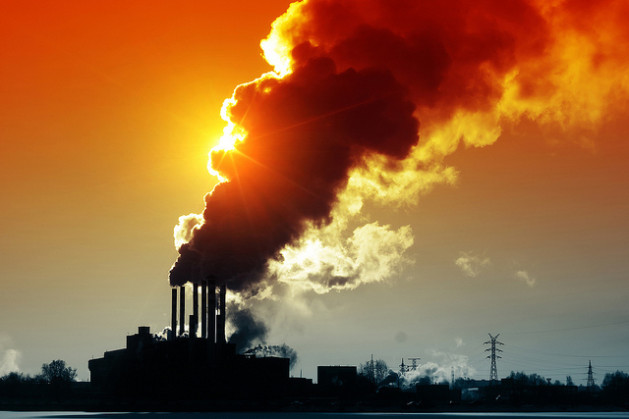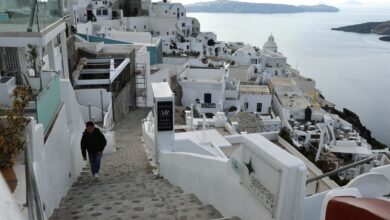The Challenge of the Carbon Aristocracy — Global Issues


WASHINGTON DC, Feb 06 (IPS) – For centuries, innumerable countries were ruled by an entrenched, typically inherited, political class: the “aristocracy.” The term comes from the Ancient Greek words “aristos”, meaning best, and “kratia,” meaning power. As a result of long and hard-fought democratic struggles, these aristocracies have largely dwindled worldwide (albeit, not everywhere).
Today, we are seeing the emergence of a new aristocracy in another arena: the millionaires whose consumption privileges produce per capita CO2 emissions incompatible with global climate goals. Like the aristocrats of the past, they are spread around the world. Meeting global emissions goals will require addressing the privileges of these worldwide wealthy big emitters, what can be called the “carbon aristocrats.”
According to Oxfam, the world’s richest 1% are responsible for 15% of global emissions. This class is mostly made up of millionaires, whonow total nearly 60 million globally and are projected to grow in number to over 65 million by 2028 (according to the UBS Wealth Report).
The United States has the most with 22 million, followed by China at nearly 7 million. Significantly, about 34% of the world’s millionaires live outside the U.S. and Western Europe, including not only China, but also South-East Asia, the Middle East and Latin America. In fact, 10 of the 15 countries with the projected fastest growth in millionaires are emerging economies. Millionaires have increasingly become a worldwide phenomenon.
The aristocrats of the past were united by many common behaviors. From the Channel to Moscow, they often spoke French better than their own country’s native tongue. Their children were frequently sent abroad to elite boarding schools in Switzerland and the United Kingdom. They vacationed together on the Cote d’Azur.
Similarly, the carbon aristocrats of today are united by what they have in common notwithstanding differing nationalities, namely a shared extravagant lifestyle and a corresponding sense of entitlement to emit large amounts of CO2. From private planes to superyachts to multiple mansions, this class of emitters shares consumption patterns that are the reserved domain of the privileged wealthy.
The unsurprising result is an inordinately high per capita level of CO2 emissions. If all these carbon aristocrats were to gather in their own exclusive nation, it would constitute the second highest CO2 emitting country in the world, behind only China with its 1.4 billion people and more than the United States with its 335 million.
Significantly, climate operates differently than economics. While the rich and their capital can generate income for the middle-class, workers and even the poor, climate is more akin to a type of zero-sum game.
The more carbon that the wealthy emit, the less carbon there is available for others consistent with limiting climate change. Like political power which was hoarded by the aristocrats of the past to the detriment of others, the carbon budget is currently being grabbed by this carbon-entitled aristocracy.
In response, I, like others, have advocated for a carbon tax targeting luxury-consumption related emissions — perhaps better termed a “carbon extravagance tax” to reflect the fundamentally gratuitous character of emissions from superyachts and similar activities in contrast to those generated by essential needs such as producing food and heating homes.
This analysis builds on the seminal work of Professor Henry Shue who back in 1992 argued for differentiating between emissions from vital subsistence activities and discretionary luxury ones.
The world has changed a great deal since then. Not only have emissions climbed dramatically over the past 30 years, there are also a lot more millionaires with high per capita emissions.
As the number of these millionaires continues to grow year upon year, including notably in the emerging economies of the Global South, it has become evident that, more than a country-based or even OECD-oriented measure, what is required is an effort targeting carbon-entitled aristocrats worldwide.
Notably, some form of internationally coordinated carbon extravagance taxes, regulations and more is needed given the cross-border mobility of the carbon-entitled aristocrats with their planes, superyachts and multiple mansions.
But the opposition to these types of measures will surely be formidable as these modern carbon aristocrats, like the aristocrats of the past, look to hold on to their privilege … in this case to emit large amounts of CO2. It’s a resistance potentially uniting the very rich and powerful of the United States with the governing elites of China, Saudi Arabia, Russia, India and elsewhere in an anti-regulatory effort.
Unfortunately, given current emissions trends, there isn’t the time to wait for voluntary action on their part. Rather, the challenge is to change the emissions patterns and, perhaps most importantly, the carbon-entitled mindset of these aristocrats.
The international community needs to consider initiatives and measures to tackle these CO2 emissions of the carbon aristocracy because the climate change analysis indicates there is no other choice.
Philippe Benoit is Managing Director at Global Infrastructure Advisory Services 2050 (www.gias2050.com) and publishes extensively on international energy and climate change issues.
© Inter Press Service (2025) — All Rights ReservedOriginal source: Inter Press Service
https://static.globalissues.org/ips/2025/02/Coal2.jpg
2025-02-06 20:37:26




